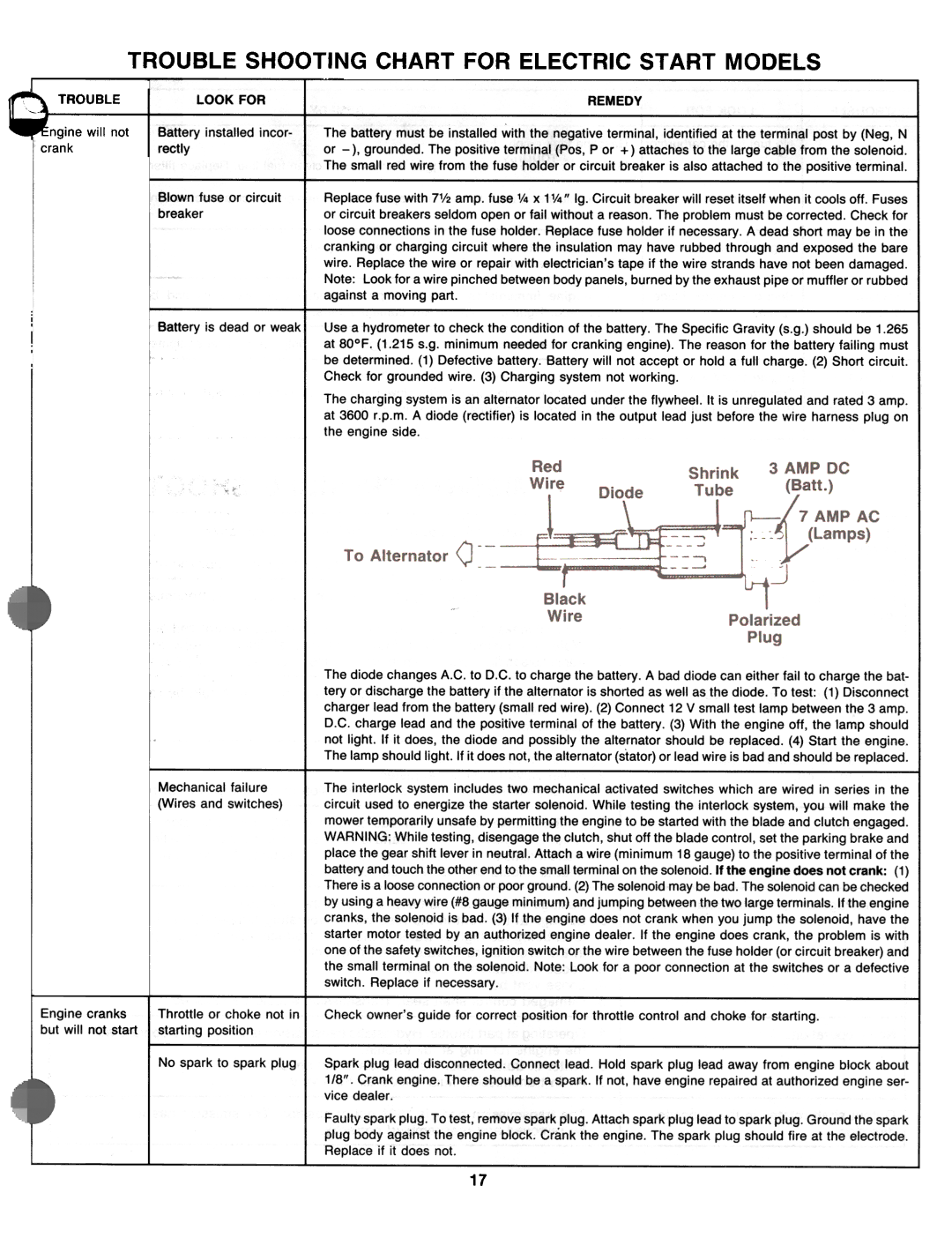131734G, 131704F, 131704G specifications
The Yard-Man 131704F, 131704G, and 131734G are standout models in the extensive lineup of lawn and garden equipment offered by Yard-Man, a brand known for its commitment to quality and innovation in outdoor power tools. These models cater primarily to homeowners and professional landscapers, providing robust solutions for maintaining lawns and gardens effectively.One of the main features of the Yard-Man 131704F is its reliable engine performance. Powered by a potent motor, this model is designed to tackle both small and large areas with ease, ensuring a uniform cut and enhancing the appearance of your lawn. The 131704G variant similarly boasts a powerful engine, but the notable feature here is its focus on fuel efficiency. This model integrates advanced technology to optimize fuel consumption without compromising cutting power, making it an environmentally friendly choice.
The Yard-Man 131734G distinguishes itself with its cutting-edge features, including a multi-height adjustment system. Users can easily modify the cutting height to suit various grass types and seasonal conditions. This flexibility allows for tailored lawn care, ensuring that the grass remains healthy and vibrant throughout the year. Moreover, this model often includes a large grass catcher, which minimizes the need for raking and promotes a cleaner mowing experience.
In terms of durability, all three models come equipped with robust construction materials that ensure longevity and resistance to the elements. The decks are typically made from durable steel, which provides stability and strength, while the ergonomic designs make them user-friendly, reducing fatigue even during extended use.
Safety features are also paramount in these Yard-Man models. Each is equipped with safety guards and easy-start mechanisms that enhance the user experience, allowing homeowners and professionals alike to operate the equipment with confidence.
In summary, the Yard-Man 131704F, 131704G, and 131734G present an excellent combination of performance, efficiency, and user-friendly design. Their exceptional engine capabilities, cutting height adjustments, and durable construction make them ideal for anyone looking to maintain a pristine lawn or garden. Whether for personal use or professional landscaping, these models represent a solid investment in outdoor maintenance equipment.

